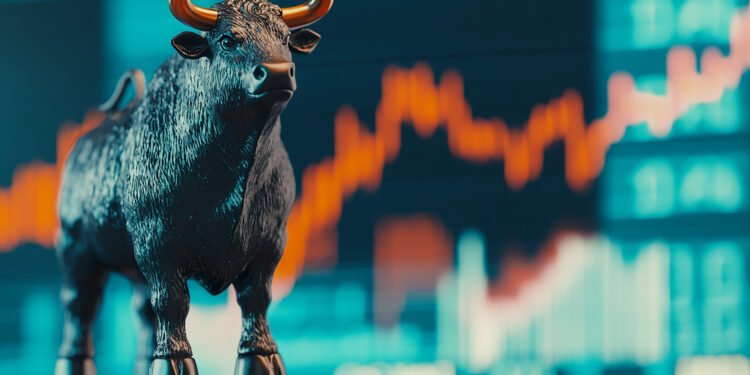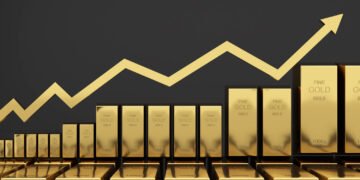After experiencing a challenging decade of underperformance, commodity markets may be positioning for a significant sustained rally driven by fundamental structural changes in both supply and demand dynamics. Multiple converging factors suggest that the conditions for a prolonged commodities super cycle—characterized by extended periods of price appreciation lasting years or even decades—may be emerging in current market conditions.
Understanding Commodity Super Cycles
Commodity super cycles represent sustained periods of price appreciation driven by major thematic shifts that fundamentally alter supply and demand relationships across extended timeframes. Historical examples demonstrate how powerful forces can create multi-year or multi-decade trends that resist normal cyclical corrections.
The 1970s super cycle emerged from a combination of geopolitical supply disruptions and accommodative monetary policies that created persistent inflationary pressures. Oil embargoes and political instability in producing regions constrained supply while loose monetary policy stimulated demand, creating conditions that supported elevated commodity prices throughout the decade.
The early 2000s super cycle was primarily driven by China’s unprecedented urbanization and industrialization boom, which created massive demand for industrial materials, energy, and agricultural products. The scale and duration of China’s infrastructure buildout sustained commodity prices at elevated levels for nearly a decade, demonstrating how transformational economic developments can override normal supply-demand cycles.
Supply-Side Vulnerabilities and Concentration Risks
Contemporary commodity markets face several supply-side vulnerabilities that could support prolonged price appreciation if tested by demand growth or geopolitical disruptions. The concentration of production and processing capacity in limited geographic regions creates significant systemic risks that may become increasingly relevant in a geopolitically fragmented world.
According to S&P Global analysis, more than 40 percent of global copper production originates from Chile and Peru, creating significant concentration risk in a metal essential for electrification and technology infrastructure. Similarly, over 50 percent of the world’s iron ore supply comes from Australia and Brazil, while Kazakhstan alone accounts for more than 40 percent of global uranium mine production.
This geographic concentration extends beyond raw material extraction to critical processing and refining operations. China refines nearly 90 percent of the world’s rare earth elements, which are essential components in electric vehicles, renewable energy systems, and defense applications. The country also processes over 40 percent of global copper supply, positioning it as a critical bottleneck in supply chains for artificial intelligence infrastructure and electrification initiatives.
Recent geopolitical developments have demonstrated how producing nations can leverage their market positions for strategic advantage. China temporarily restricted rare earth element exports in 2025 during trade disputes, illustrating the potential for supply disruptions driven by political considerations rather than pure economic factors. Similarly, the United States has incorporated long-term liquified natural gas purchase commitments into tariff agreements with the European Union and South Korea, demonstrating how energy security increasingly intersects with trade policy and geopolitical negotiations.
The integration of commodity supply chains into broader geopolitical competition creates persistent risk premiums that could manifest in severe supply disruptions or sustained price premiums as nations prioritize security of supply over cost optimization.
Declining Resource Quality and Investment Constraints
Beyond geopolitical concentration risks, fundamental geological and economic factors constrain future supply growth. The most accessible, high-grade mineral deposits have likely been identified and developed, meaning that new mining projects must contend with declining ore grades, increasing capital costs, and extended development timelines that can exceed a decade from discovery to production.
Years of underinvestment in commodity production capacity have further constrained the supply pipeline. Following the 2010s commodity downturn, mining companies faced significant shareholder pressure to prioritize dividend payments and share buybacks over growth capital expenditures. This financial discipline improved short-term returns for investors but starved the industry of the exploration and development spending necessary to replace depleting reserves and expand production capacity.
The combination of geological challenges and capital constraints means that even substantial price increases may not quickly stimulate new supply, as projects require years of lead time and face increasingly complex permitting and environmental approval processes. This supply inelasticity creates conditions where demand growth can produce sustained price appreciation rather than temporary spikes.
Structural Demand Growth Drivers
Powerful secular trends on the demand side suggest sustained consumption growth for numerous commodity categories, particularly industrial metals essential for energy transition and technological infrastructure. The global push toward electrification and decarbonization creates fundamentally metal-intensive requirements that differ substantially from historical consumption patterns.
Copper exemplifies these dynamics, as traditional construction and industrial applications are being supplemented by explosive growth in electric vehicles, renewable power generation systems, and electrical grid infrastructure necessary to support increased electrification. Each electric vehicle requires substantially more copper than internal combustion vehicles, while wind turbines and solar installations are significantly more copper-intensive than conventional power generation.
The International Energy Agency characterizes copper as a “global critical mineral” and estimates that demand based on stated policy commitments and supply from announced projects could produce a potential shortfall of 30 percent by 2035. This projection suggests not merely a cyclical supply shortage but a structural mismatch between inadequate production capacity and accelerating consumption growth.
Technology Sector Demand and Strategic Imperatives
Major technology companies are making unprecedented capital investments in artificial intelligence infrastructure, including data centers and associated power generation facilities. These firms are collectively spending hundreds of billions of dollars annually on capital expenditures, creating substantial new demand for industrial materials, energy, and specialized metals.
For technology companies engaged in artificial intelligence competition, securing necessary energy supplies and material inputs represents an existential strategic imperative rather than a discretionary investment decision. This creates highly inelastic demand that remains resilient even during economic downturns, as companies cannot afford to fall behind competitors in critical technology races.
The magnitude and strategic nature of this demand differs from traditional cyclical consumption, suggesting that even economic slowdowns may not significantly reduce technology sector commodity consumption as firms prioritize long-term competitive positioning over short-term cost optimization.
Financial Market Dynamics and Valuation Considerations
Financial market dynamics also appear increasingly favorable for commodity investments following an extended period of underperformance relative to financial assets. Inflation-adjusted copper prices remain approximately 30 percent below their 2011 peak, while inflation-adjusted oil prices and the overall Bloomberg Commodities Index are approximately 70 percent below their previous peaks in 2008.
This valuation backdrop contrasts sharply with equity markets, where the S&P 500 continues reaching nominal all-time highs and has nearly tripled since its pre-Global Financial Crisis peak in 2007, even after adjusting for inflation. The substantial valuation gap between commodity and financial assets suggests potential for mean reversion or catch-up appreciation if fundamental conditions support commodity demand.
Portfolio Diversification and Inflation Hedging
Evolving macroeconomic conditions may also support increased commodity allocation as investors seek portfolio diversification tools. Persistent inflation in several developed markets, particularly the United States, could limit central banks’ ability to aggressively reduce interest rates during economic weakness, reducing the effectiveness of traditional bond holdings as equity hedges.
If bonds become less reliable for offsetting equity market declines, traditional balanced portfolios consisting primarily of stocks and bonds become more vulnerable during periods of market stress. This creates potential demand for alternative diversification tools, with commodities representing a logical candidate given their historical behavior during inflationary periods.
Gold has already demonstrated renewed appeal as a geopolitical and monetary hedge, driven by substantial central bank purchases and growing retail investor interest. Industrial metals and other commodity categories may similarly attract strategic allocation as investors recognize their potential as inflation and growth hedges given supportive supply-demand fundamentals.
Institutional Investment Patterns and Constraints
Despite favorable structural conditions, commodity investments remain relatively rare within institutional portfolios. Many investors have interpreted recent decade’s poor commodity price performance as indicative of future prospects, creating a backward-looking mentality that constrains capital flows into the sector.
Investment mandates permitting direct commodity investments, much less dedicated commodity allocation strategies, are uncommon among institutional investors who have favored financial assets during the extended bull market. This institutional underallocation could amplify price movements if fundamental conditions drive increased commodity demand, as even modest portfolio reallocation could represent substantial capital flows relative to commodity market size.
Historical Super Cycle Characteristics
Historical experience suggests that commodity super cycles, once initiated, demonstrate remarkable persistence and require significant countervailing forces to terminate. Previous cycles have ended only through painful demand-side policy interventions, such as former Federal Reserve Chair Paul Volcker’s aggressive interest rate increases in the 1980s, or major supply-side technological breakthroughs like the U.S. shale revolution in the 2010s.
More recently, China’s property market downturn contributed to ending commodity price strength by reducing a major source of industrial demand. These examples illustrate that super cycles typically persist until extraordinary developments fundamentally alter supply or demand conditions, meaning that sustained price appreciation can extend for years or decades once initiated.
Current Market Assessment
While precisely timing commodity super cycles remains extremely challenging, investors can identify when underlying conditions appear conducive to sustained price appreciation. Current market conditions exhibit several characteristics associated with super cycle initiation, including supply constraints from underinvestment and concentration risks, structural demand growth from electrification and technology infrastructure, and attractive valuations following extended underperformance.
The convergence of these factors does not guarantee a commodity super cycle, as unforeseen technological developments, policy changes, or economic disruptions could alter fundamental dynamics. However, the alignment of multiple supportive structural factors suggests that commodity markets may be positioning for a sustained period of outperformance relative to recent historical experience.
Investors should recognize that commodity investments involve substantial volatility and risks, including geopolitical disruptions, technological obsolescence, and economic cycles that can produce significant short-term price movements. However, for those with appropriate risk tolerance and investment horizons, current structural conditions may present opportunities for strategic commodity allocation as part of diversified portfolios.







